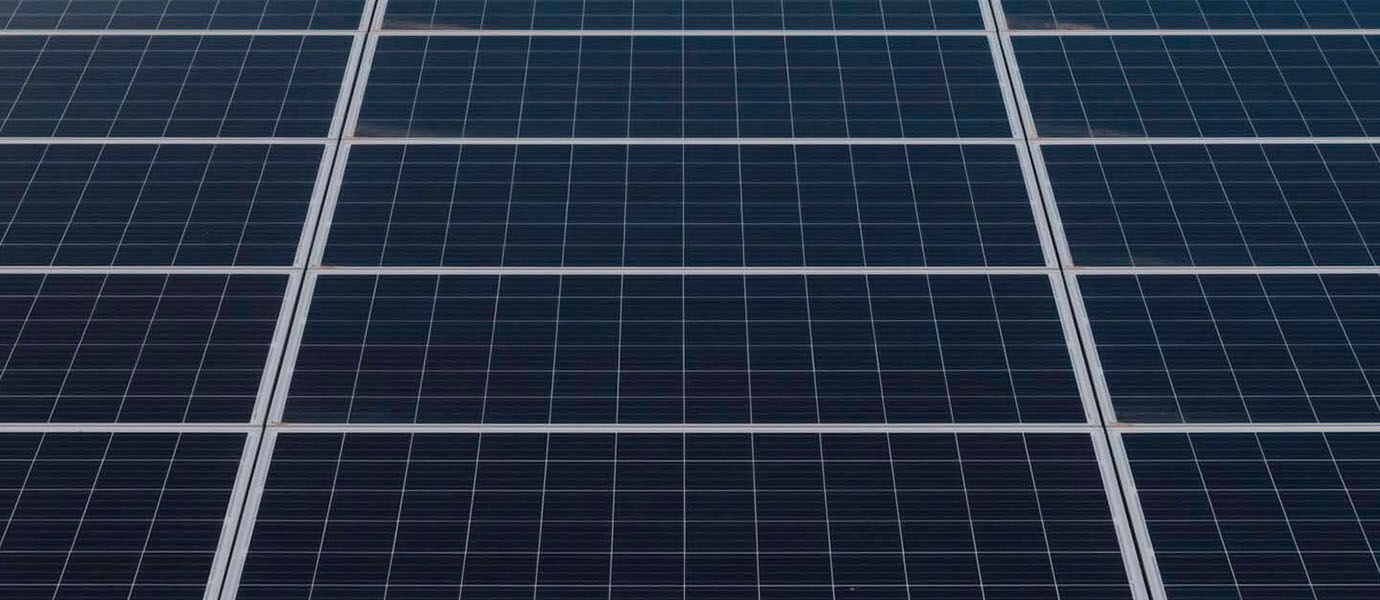WHAT IS SOLAR ENERGY?
Solar energy is that produced by the Sun’s light – photovoltaic energy – and its warmth – solar thermal – for the generation of electricity or the production of heat. Inexhaustible and renewable, since it comes from the Sun, solar energy is harnessed using panels and mirrors.
Photovoltaic solar cells convert sunlight directly into electricity by the so-called photovoltaic effect, by which certain materials are able to absorb photons (light particles) and liberate electrons, generating an electric current. On the other hand, solar thermal collectors use panels or mirrors to absorb and concentrate the Sun’s heat, transferring it to a fluid and conducting it through pipes to use it in buildings and installations, and also for electricity production (solar thermoelectric).
HOW IS SOLAR ENERGY OBTAINED?
It provides heat
It provides heat tapped by mirrors that focus sunlight on a receiver that contains a fluid which reaches temperatures up to 1,000 ° C. The heat transforms the fluid in steam which moves a turbine and finally produces electricity.
It provides light
It provides light that is converted into electricity through photovoltaic solar panels. Photovoltaic panels are formed by groups of cells or solar cells that convert light (photons) into electrical energy (electrons).
The Sun: Our World's Greatest Source of Clean and Inexaustible Energy
What are the benefits of solar energy?
Against climate change
Renewables do not emit greenhouse gases in energy generation processes, making them the cleanest, most viable solution to prevent environmental degradation.
It is inexhaustible and renews itself
Compared to conventional energy sources such as coal, gas, oil and nuclear - reserves of which are finite - clean energies are just as available as the sun from which they originate and adapt to natural cycles, hence their name “renewables”. This makes them an essential element in a sustainable energy system that allows development today without risking that of future generations
Non-contaminating
Solar energy does not emit toxic substances or contaminants into the air, which can be very damaging to the environment and to human beings. Toxic substances can acidify land and water ecosystems, and corrode buildings. Air contaminants can trigger heart disease, cancer and respiratory diseases like asthma.
Solar energy does not generate waste or contaminate water—an extremely important factor given the scarcity of water. Unlike fossil fuels and nuclear power plants, wind energy has one of the lowest water-consumption footprints, which makes it a key for conserving hydrological resources.
Increasingly competitive
Nowadays renewables, specifically wind and photovoltaic, are cheaper than conventional energies in much of the world.
The main renewable technologies – such as wind and solar photovoltaic – are drastically reducing their costs, such that they are fully competitive with conventional sources in a growing number of locations. Economies of scale and innovation are already resulting in renewable energies becoming the most sustainable solution, not only environmentally but also economically, for powering the world.
Creates wealth and jobs
In addition, solar energy is a “native” energy, because it is available practically everywhere on the plant, which contributes to reducing energy imports and to creating wealth and local employment.
For these reasons, producing electricity through solar energy and its efficient use contributes to sustainable development.

Curiosities about solar energy
“Use of solar energy is near a solution”. This was the headline in the New York Times on 4 April 1931. It turned out to be a premonition, since, 80 years later and electricity is being supplied to millions of human beings in the world from renewable energies such as solar. Humanity has now declared its readiness to accelerate the transition to a low-carbon economy, conscious of the finite nature of fossil fuels and their prejudicial effects on the environment as the main cause of global warming.
As the Chilean poet Pablo Neruda chimed in El Sol: “I am a man of light, of so much rose, such predestined clarity, I will die from shining”.

Solar energy, on the other hand, will never die of shining, since the Sun still has 6.5 billion years of life according to NASA. Indeed, in rather less time, solar technology in some countries has evolved to compete with conventional sources of electricity generation. In just a few decades’ time, it will become the major part of a sustainable energy system for the world.
Additionally, the conditions for the development of solar energy could not be more perfect: the Sun bathes the Earth hourly with enough light and heat to fulfill global needs for a whole year; in other words, solar radiation can satisfy our energy needs 4,000 times over.
As the publication Renewable Energies Info estimates, the Earth’s surface receives 120,000 Terawatts of solar irradiation, “which represents 20,000 times more power than the whole planet needs”.
Backing this argument further, the Union of Concerned Scientists says that as little as 18 days of solar irradiation on Earth contains as much energy as all the world’s coal, oil and natural gas reserves put together.
The NYT article put forward the suggestion that Humanity “will no longer have to fear the exhaustion of coal reserves foreseen within the next few hundred years, if Dr Lange’s theory is right”. Well, the words of German solar energy scientist, Dr Bruno Lange, back in 1931, have been proven right.